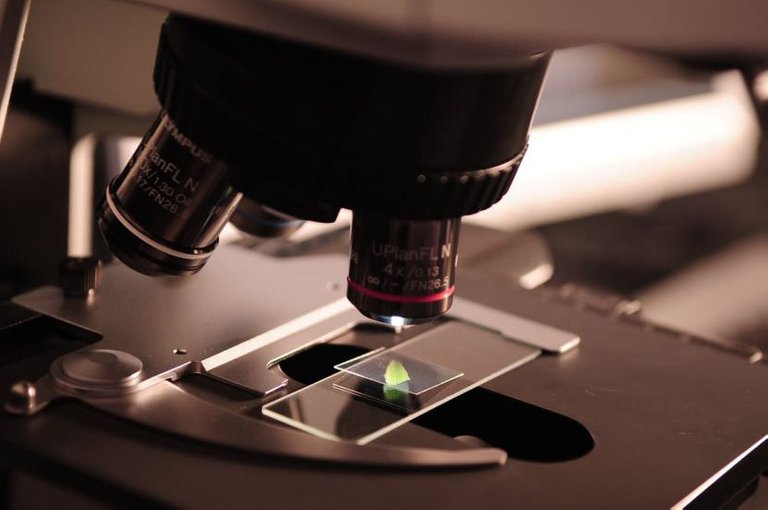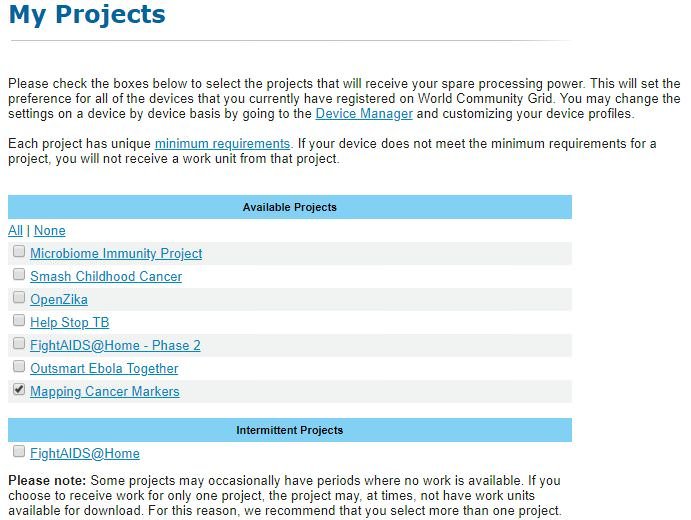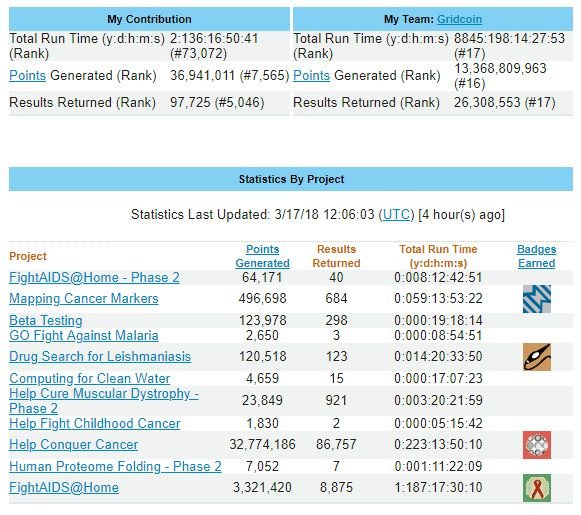Hello Steemians,
you may have already read my recent post, where I described BOINC.
It is a platform that allows volunteers to use their unused computer's processing power to help scientist find a cure for cancer or other various diseases, to find new pulsars, to create a model of MilkyWay galaxy and so on.
You can read my post about BOINC here.
World Community Grid
Today I will introduce one of the most famous BOINC projects called World Community Grid.
World Community Grid differs from other projects running under the BOINC platform by integrating a number of other subprojects with a different focus (mainly on biology research).
World Community Grid, which was founded in 2004 by IBM on the basis of previous success in the use of distributed computing to find a cure for smallpox, initially functioned as a standalone platform, but was later integrated under BOINC on the basis of the requests of many users.
In 2003, the Smallpox Research Grid Project was launched. Within 72 hours of starting the project, 100,000 results were returned. At the end of project, 44 very promising candidates for a cure were found. It was a great success thanks to which the World Community Grid was created.
Today there are 7 active subprojects focusing mainly on the search for drugs against AIDS, tuberculosis, cancer, or also on understanding human microbiome.

Source: PEXELS
How to Join World Community Grid?
Joining is really easy.
- Go to World Community Grid website and sign up
- Open your BOINC manager
- Select tools
- Add project
- Choose World Community Grid and enter your previously selected member name and password
How to Choose Only Those Subprojects That Interest Us?
Login to World Community Grid website, select "My contribution" and then "My projects". You will then be able to select subprojects with the focus you are most interested in and your computer will only receive work units from projects you choose.

Which Subprojects Can You Choose?
These subprojects are currently active.
Microbiome Immunity Project
By participating in this project, you will help scientists better determine the shape and function of proteins produced by bacteria living in our digestive tract.
Based on these findings, scientists will then be able to determine the role of these bacterial proteins in various diseases and perhaps even develop drugs against diseases such as type 1 diabetes, Crohn's disease, and others.
You can find detailed information here.
Smash Childhood Cancer
By participating in this project you will help scientists perform simulations of reactions of various compounds.
The aim is to find substances that are capable of neutralizing proteins associated with childhood cancers, particularly neuroblastoma.
You can find detailed information here.
OpenZika
Zika virus is a disease occurring mainly in tropical and subtropical areas. The virus is spread by mosquitoes. Disease presents a high risk for pregnant women because microcephaly or other severe developmental fetal disorders occur.
By participating in this project you will help scientists perform simulations of reactions of various compounds. The goal is to find compounds capable of destroying the virus.
You can find detailed information here.
Help Stop TB
Tuberculosis is an infectious disease transmitted by contact with an infected person. It is a disease mostly affecting our lungs, kidneys and bones. In essence, however, it can attack any part of the human body.
Tuberculosis bacteria are protected by a special coat that allows bacteria to resist drugs. By participating in this project, you will help scientists understand how these bacteria resist drugs and how to develop more effective drugs.
You can find detailed information here.
FightAIDS@Home - Phase 2
HIV virus is specific in that it is constantly evolving in a more and more resistant form, so it is necessary to develop more effective drugs.
By participating in this project, you will help scientists find potential compounds that could neutralize the virus.
You can find detailed information here.
Outsmart Ebola Together
The Ebola virus was first isolated in 1976 in the northeast of the Democratic Republic of Congo. Since then, other virus strains have been discovered and a large number of deadly epidemics have erupted.
Ebola is one of the most dangerous diseases that humanity has ever encountered. The patient gradually starts to bleed from all body holes, vomit blood, and blood bruising may develop on the skin. At the same time, there is severe damage to all internal organs, especially to the liver, which lose their structure and decompose.
By participating in this project, you will help scientists find a substance that can destroy Ebola virus.
You can find detailed information here.
Mapping Cancer Markers
Participating in this project will help scientists analyze millions of tissue samples. Both healthy tissue samples and tissue samples with different types of cancer will be analyzed.
Goal of this project is to improve and personalize cancer treatment.
You can find detailed information here.
Is There Any Reward?
There is no financial reward - your good feeling should be your reward. For finished work units, you will receive BOINC credits that serve only for statistical purposes.
However, there is a possibility to mine Gridcoin just by running BOINC. Gridcoin was designed to reward volunteer computing performed upon the BOINC platform. You can read more about Gridcoin here.
Below you can see my statistics on World Community Grid subprojects. You get awarded also with World Community Grid points but they also serve only for statistical purposes.

Conclusion
Many of you are mining various cryptocurrencies.
Why not use part of your computer's performance to help with developing drugs against diseases that can one day affect any of us?
_________________________________
Sources:
http://www.computerweekly.com/news/2240049412/IBM-builds-grid-for-smallpox-research
I recently started reading through your articles and it's helpful to me as a "starter". I had few questions that I commented on your first article, I'm hoping to get your feedback. Thank you